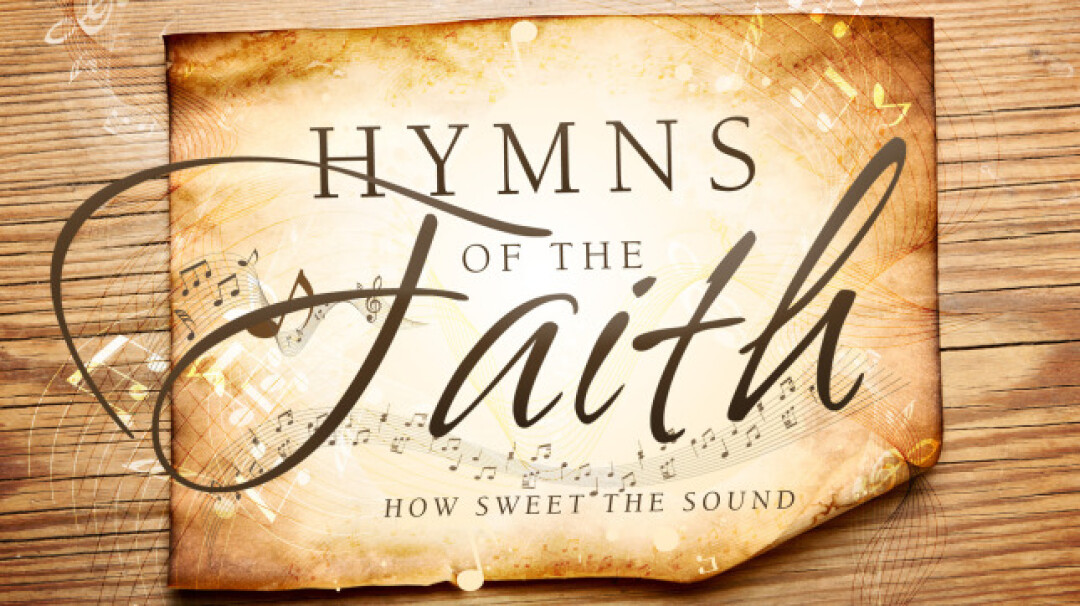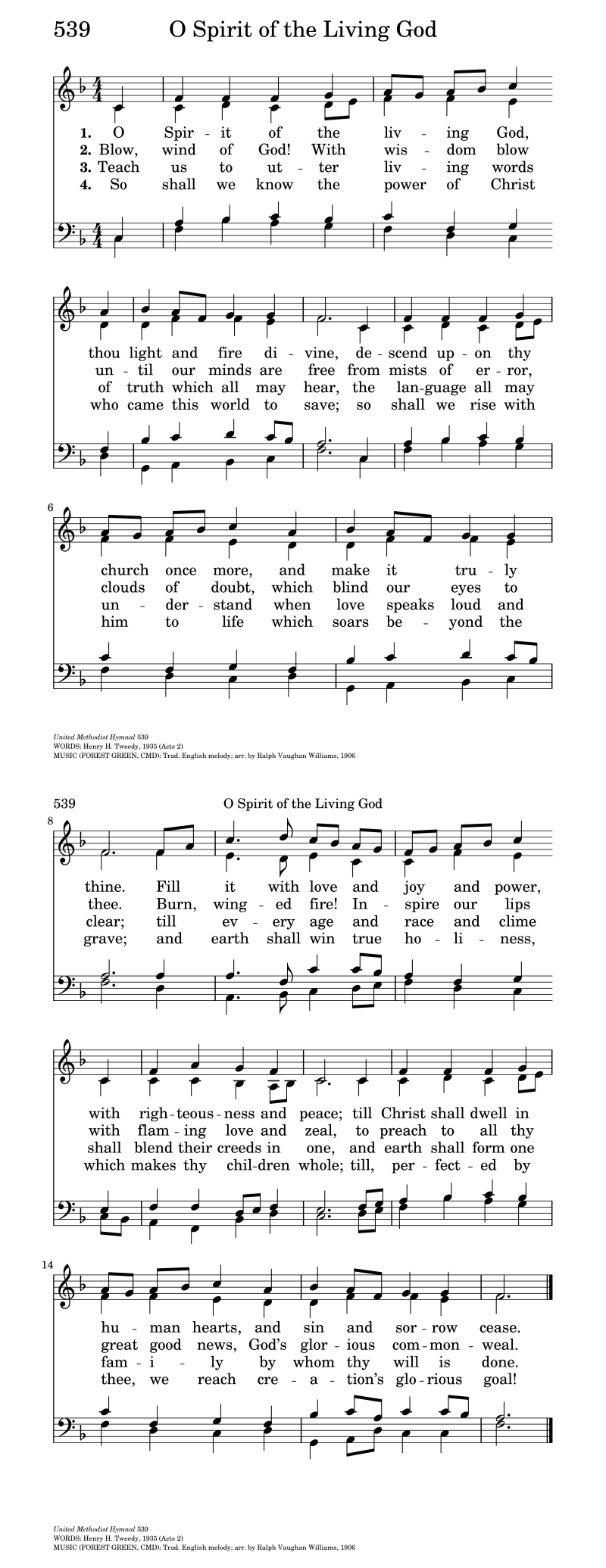

"O Spirit of the Living God"
Henry H. Tweedy
UM Hymnal, No. 539
On Pentecost Sunday, June 8, 2025, the Pender choir and congregation lifted their voices in the stirring hymn “O Spirit of the Living God” (UMH #539), celebrating the movement of the Holy Spirit among us.
Accompaniment:
- Heidi Jacobs – Piano
- Patrick King – Keyboards
- Abe Garver – Cello
And yes—if you listen closely, you can hear Pastor Bruce Johnson singing bass through his mic!
This timeless hymn reminds us of the Spirit's renewing power in our lives and in the life of the Church. Come, Holy Spirit!
On October 13, 2024, the congregation at Pender United Methodist Church joined in a powerful rendition of the hymn "O Spirit of the Living God." The hymn was performed by the choir, praise band, and congregation, under the direction of Patrick King. Heidi Jacobs accompanied on piano, with Abe Garver on cello, AJ Rios on percussion, and Patrick King on keyboards. This inspiring performance beautifully combined voices and instruments to create a moving moment of worship.
The Pender UMC Traditional Service Closing Hymn “O Spirit of the Living God" on Pentecost Sunday May 8, 2023 was played by Heidi Jacobs on piano and Brian Stevenson on flute.
The Pender UMC Traditional Service Second Hymn "O Spirit of the Living God" on Pentecost Sunday June 5, 2022 was accompanied by Liz Sellers on piano, Brian Stevenson on organ and sung by the Pender Sanctuary Choir and Congregation.
Henry Hallam Tweedy (1868-1953) hailed from the northeast, born in Binghamton, N.Y. He was granted degrees from Phillips Andover Academy, Yale University, Union Theological Seminary and the University of Berlin.
A Congregational pastor, he served churches in New York and Connecticut, and later taught practical theology from 1909-1937 at Yale Divinity School.
He co-authored several books, including Training the Devotional Life (1919) and Religious Training in School and Home (1917). His most important contribution, however, was as editor of the hymnal Christian Worship and Praise (1939).
In addition to editing a hymnal, Tweedy published a practical volume, The Minister and His Hymnal, and won several hymn contests sponsored by the Homiletic Review and the Hymn Society of America.
Hymnologist Albert Bailey notes that Tweedy’s “courses led him to study with his students various hymnals in common use and to appraise hymns for their religion, their poetry, and their value in public services of worship.” Out of this Tweedy began to compose his own hymn texts.
The United Methodist Hymnal contains one of Tweedy’s three main hymn texts in use today, the other two being “Eternal God, Whose Power Upholds” (1928), winner of the Hymn Society of America’s missionary hymn competition, and “O Gracious Father of Mankind” (1925).
Methodist hymnologist Guy McCutchan quotes Tweedy, who said he composed “O Spirit of the Living God” because “some of the old Pentecostal hymns were to me unsatisfactory, and I was eager to interpret the symbolism of the story in Acts in a way that modern men could understand and sincerely mean.”
The hymn was first published in the Methodist Hymnal (1935) after Halford E. Luccock, the author’s friend, sent it to the hymnal committee.
The text is an exposition of Acts 2, a passage focused on Pentecost. Stanza one is a petition for “light and fire,” primary images of the Spirit at Pentecost, to “descend upon the church once more.” The petitions continue as the author asks the Spirit to “make [the church] truly thine,” “Fill [the church] with love and joy and power, with righteousness and peace.”
Stanza two begins with an imperative verb, “Blow, wind of God!”—a request for wisdom “until our minds are free from mists of error.” The second half of the hymn petitions the Spirit to “Burn, winged fire!”—a request for inspiration of “lips with flaming love and zeal, to preach. . . . ”
Stanza three continues with imperative petitions: “Teach us to utter living words of truth”—a request for insight that will lead to an ecumenical vision when all shall “blend their creeds in one, and earth shall form one family. . . . ”
The final stanza answers the question, “So what?”
The composer makes these petitions so that “we know the power of Christ who came this world to save. . . . ” If these petitions are fulfilled, “true holiness” will make “thy children whole” and we will be “perfected by thee . . . [to] reach creation’s glorious goal!”
Interestingly, the language of Christian perfection indicates a Wesleyan direction for the culmination of the hymn.
The Rev. Carlton Young, editor the UM Hymnal, notes: “This is one of a few social gospel hymns written in the 1930s that has survived.” It follows in the mold established by Baptist theologian Walter Rauschenbusch (1861-1918) and expressed so beautifully in hymns like Congregationalist Washington Gladden’s “O Master Let me Walk with Thee” (1879) and the Methodist Frank Mason North’s “Where Cross the Crowded Ways of Life” (1903).
One additional note—Tweedy is credited with a quotation that often appears in association with his name: “Fear is the father of courage and the mother of safety.”
Dr. Hawn is professor of sacred music at Perkins School of Theology, SMU.
Adapted from https://www.umcdiscipleship.org/resources/history-of-hymns-o-spirit-of-the-living-god


